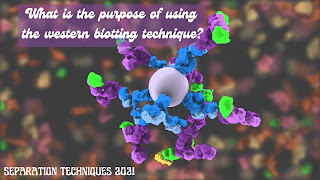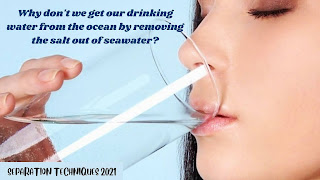What is the purpose of using the western blotting technique?

The blotting technique is a method for identifying biomolecules including DNA, mRNA, and protein at various stages of gene expression. Protein synthesis begins with the expression of a DNA segment, which is then transformed to mRNA and then translated into the desired protein. The target molecule that is sought determines the subtypes of blotting, such as northern, western, and southern. When a DNA sequence is a foundation or code for a protein molecule, the particular DNA molecule of interest can be blotted using the Southern Blotting technique. Northern blotting can be used to identify when DNA is expressed as mRNA for protein creation during gene expression. Finally, the coded mRNA produces the desired protein, which can be identified via Western Blotting. Western blotting (also known as Immunoblotting) is a popular method for detecting proteins and posttranslational modifications on proteins in complicated materials. It uses antibody-based probes to extract particular information a





